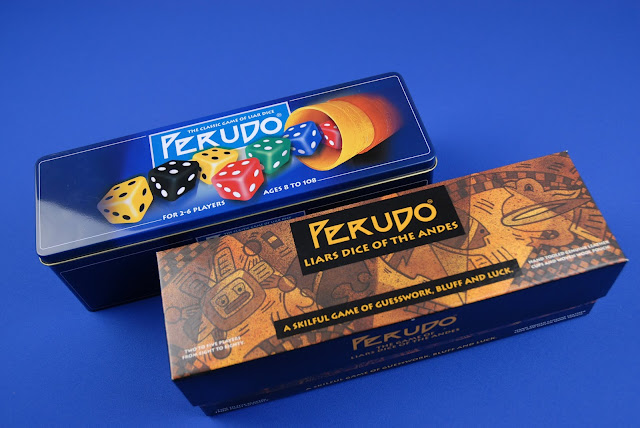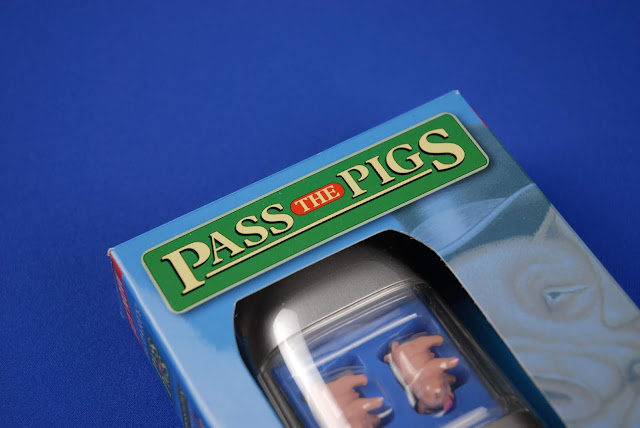Review: Camel Up
Players: 2-8
Ages: 8+
Time to play: 20-30 minutes
So today I'll be reviewing the eye-catchingly lovely Camel Up which was designed by Steffen Bogen and released in 2014. During that year it was the winner of the prestigious Spiel des Jahres award, impressively beating the likes of Splendor and Concept to the top spot. In Camel Up you play one of 8 people betting on the outcome of a camel race in the desert next to a great pyramid.
The edition I'm currently reviewing is out of print, but the lovely people at Z-Man games are just about to release a new 2018 version with updated components and a few extra gameplay elements. As I don't have that version, I'll be reviewing this one as the game itself is fundamentally the same.
In this version, you get the racetrack themed game board, which acts as the placeholder for most of the components, 5 brightly coloured camels and their associated dice, a number of betting tiles, corresponding to each camel and the innovative build-it-yourself pyramid dice roller. You also get betting cards and desert tiles for each of the eight players and enough Egyptian pounds to start a small coup (not that those kind of things ever happen in Egypt).
The game itself is really straightforward. Each player gets 5 betting cards, a desert tile (which has an oasis on one side and a mirage on the other) and 3 Egyptian pounds. The aim of the game is to bet on the camels as they move around the board, which is designed like a race track. The race itself is split up into legs, and during a leg, players bet on which camel they think will be out in front at the end of it. Any winning bets get paid out at the end of the leg and likewise, losing bets will mean that the player loses money.
On each players turn they can perform one of four actions. The first of these is simply to place a bet on which camel they think is going to win that leg. To do this, all they they need to do is pick up the appropriately coloured betting tile from the pile of betting tiles. The tiles are arranged so that the first person who places a bet gets a higher return on their bet. So, just like in real life, betting early has a bigger payout. Each betting tile has three values on it, these are the return that you will get if your camel places first or second, and also how much you lose if the camel is placed in the back three for that leg.
The second action that a player can take is to bet on the overall winner or loser of the race, to do this all that player does is to place one of their personal betting cards face down on to the appropriate section of the board. These cards remain face down until the end of the game and then are overturned to see who guessed correctly. All of the players who guessed correctly receive payouts as shown on the game board, with the player who guessed correctly first receiving the largest. Any incorrectly placed bets lose money for the players that placed them.
Now, the third action is to place a desert tile on the board with either the oasis or the mirage side up. If a camel lands exactly on the desert tile then it either moves forward one space if the oasis side is showing, or moves back a space if the mirage space is showing. This gives the players a little opportunity to influence the field.
The fourth and final action is to move the camels themselves and this is where a couple of Camel Up's most interesting elements come into play. The first of these elements is the innovative centrepiece of the game - a dice roller which is shaped like a pyramid. Inside this pyramid are the five coloured dice which correspond to the five camels that are racing. If you choose to take this action then you give the pyramid a shake, place it upside down on the board, then push and release the mechanism which reveals a single die. The camel whose colour matches that die is then moved around the track the number of spaces shown on that die. After this, the die is placed on the corresponding coloured tent so the players know which camels have moved. Every time someone moves a camel, that earns them a special pyramid token which is worth 1 Egyptian pound.
The second of these elements is is how the camels actually move around the board. If a camel lands on a space which already contains a camel, then that camel stacks on top of it. The camel which is on the top of that pile is currently in the lead for that specific group, and the one on the bottom is the farthest behind. If you happen to roll a die and the camel you are moving is on the top of a pile, then that camel just moves off as normal. But, if that camel happened to be in the middle or bottom of a stack, then he would move as normal but also carry any other camels that are stacked on top of him. This means that by a series of piggy backs, camels can potentially move multiple times in one leg.
So to recap, each player bets on which camel will be in front for the current leg. Once the leg is complete, the bets are paid out and penalties paid. The betting tiles and desert tiles are then returned for the next leg. This continues until one or more of the camels crosses the finish line, then all the bets are paid out just like a normal leg. But in addition, the overall winner cards and overall loser cards which players have been placing throughout the game are revealed. These are then checked and paid out too. The person with the most Egyptian pounds wins!
When I initially looked at Camel Up, I thought that it was probably aimed at a much younger audience than myself. After all, Spiel des Jahres candidates are pitched as games that all of the family can enjoy together, and that is definitely true of this game. But after playing it I was pleasantly surprised. The game is really fun to play, and I really enjoyed it. But I think that this enjoyment is very much dependent on the type of person you play this game with. You see, Camel Up is a game about thrills and excitement, not strategy. It requires players who become invested in their bets, who will cheer when they win, and hold their head in their hands when they lose.
A table full of seasoned poker-faced strategists will probably not enjoy this game, as although there are a few strategic elements, there won't be enough to keep them interested. However if you swap half of these players out for some thrill seeking risk takers, then everyone will have a blast - strategists and risk takers alike. The strength of this game is the social experience that it provides when you have the right people at the table.
And although I mentioned that the strategy is light, this is purposefully so. Racing games need to be that way to emulate the unpredictability and thrill that you would get from a real race. Camel Up does this perfectly, and this is largely due to the delicate and complementing mechanics used in the game. A huge part of this is the way that the racing mechanic is used to move the camels. You see, each die only allows the camel to move up to 3 spaces, which means the camels would naturally be quite close. But when you couple this with the camels unique ability to carry other camels, then this makes for some really interesting races!
Sometimes the game will play out a predictably, but often because of this mechanic, you will get situations when the right combinations of two or three dice rolls, will mean that a camel at the back suddenly surges to the front. This changes the dynamic of the race completely and also the fortunes of the players. New betting opportunities arise and those players who thought they had backed winners now find themselves on the back foot. But all is not lost for these players, as the desert tiles add just enough to make it possible to influence the outcome back in their favour, well... sometimes.
The betting is weighted really nicely as well. Although you do lose money when your camel ends up at the back, It's not so much as to keep you out of the game. This makes it less of a financial risk to bet on a complete outsider, and this is fundamentally why Camel Up works so well. It rewards the right bets generously and only penalises lightly for mistakes. This skews the betting mechanism much more towards the pleasure end of the spectrum than the pain one - keeping it fun for everyone.
The only real downside of the game is the fact that the artwork and design make you think this game is aimed at a much younger audience, which may put some older gamers off. But this has already been remedied with the recent 2018 re-release which, in addition to some extra rules and gameplay, also has updated artwork.
Overall, Camel Up is a great game (if you're playing with the right people). It's light in strategy but heavy in fun. Because of the simple rules, and the high unpredictably it's a game where people with a range of gaming abilities can play together on equal terms. This, coupled with the fact that games are quick and downtime is short, makes it an excellent Family game.
I'd certainly recommend Camel Up, and if you'd like to give it a try it's available for purchase here. Though you might want to hold out for the 2018 version.











Comments
Post a Comment